Sandwiched between downtown St. Louis to the west, and the Mississippi River to the east lies the Jefferson National Expansion Memorial. The 91 acres of the Memorial are home to the Gateway Arch, the Museum of Westward Expansion, and the Old [St. Louis County] Courthouse. The links provided above provide plenty of details about the Memorial, but briefly, the park was created to commemorate:
- The Louisana Purchase, and the subsequent westward exploration and expansion of the United States.
- The first civil government west of the Mississippi River.
- The debate over slavery raised by the Dred Scott case.
Approaching the Arch on foot from the north, one immediately notices the similarity to the Washington Monument, althought the illusion soon disappears as you move to the side of the towering arch.
The actual size of the arch cannot be fully appreciated until you approach the very base and gaze in an upward direction. You soon find yourself jockeying for a suitable position to view the entire arch at one time.
Alas, the dimensions of the arch are so vast, and the field of vision of our eyes so comparatively narrow, we come to realize that from this close proximity we can only view a portion of the arch with each gaze.
The height of the arch measures 630 feet, which exactly matches the 630 foot width of the arch at its base. It is quite an experience to stand directly underneath the apex of the arch and look up – the top of the arch seems far, far away! It occurs to me that this might be the only time in my life that I have stood directly underneath any structure this tall! So help me out – if you can think of any example of a structure that a person can stand under that exceeds the height of the Gateway Arch, please leave a comment explaining where.
After standing underneath the arch, you might decide to ride the tram to the top of the Gateway Arch. After purchasing your tickets for the tram, you will make your way to the tram loading station, where you will enter a tram pod for the ride up the inside of the arch. There are eight tram pods on the north leg of the arch, and eight pods on the south leg. Each of the pods can hold up to five people. As you can see from the photo above, the loading zone for the tram is fairly level on the horizontal plane. Yet the tram must travel up an arch leg that is almost straight up on the vertical plane. How is this accomplished?
The tram, consisting of eight pods, is not a single structure, but rather a row of eight independently suspended units, as seen above. The pods are in lateral alignment along the horizontal parts of the journey, and stack up, one above the other on the vertical portion of the ascent.
This is what the interior of the tram pod looks like. In the off-season, you may end up with a pod to yourself, but each pod holds up to five passengers, albeit snugly. The trip to the top of the Gateway Arch takes four minutes – the trip down, three minutes.
Once at the top of the arch, the tram lets you off at the observation area, where rows of windows allow you to see the surrounding countryside for many miles in each direction.
Upon gazing out of the observation windows, one is immediately struck with the realization of how high the arch towers above the St. Louis skyline. To get a sense of size, the enclosed football stadium on the right-hand side of the photo above is the Edward Jones Dome, the home of the NFL’s St.Louis Rams.
Directly to the west is the Old Courthouse, which is also part of the Jefferson National Expansion Memorial. Most notably, this was the court of original jurisdiction in the historic Dred Scott v. Sandford case, in which the U.S. Supreme Court held that Africans brought to the United States as slaves (or their descendants) were not protected by the United States Constitution, and could never be citizens.
To the southwest one can see Busch Stadium III, completed in 2006 and home of MLB’s St. Louis Cardinals.
To the east one can see the mighty Mississippi River. The color of the Mississippi River is not as blue as this photo would suggest. This is simply a reflection of the blue sky above; from a land-based perspective, the river is typically brown.
Looking directly below the arch to the northwest, lies the first of two large reflecting pools.
The second reflecting pool lies immediately below the arch to the southwest.
Housed below the arch in an underground facility is the Museum of Westward Expansion, documenting the growth of the United States, from inception to the present, with an impressive collection of artifacts and exhibits.
There are two theaters located within the monument. One theater shows a documentary film in which you learn how the Gateway Arch was constructed. The second theater shows an IMAX large screen format film chronicling the expedition by Lewis and Clark to document the western territories of the United States. Both films are very well done, and worth the time to see.
All-in-all, the time spend exploring the Jefferson National Expansion Memorial is time well-spent. If I didn’t think this was worth visiting, I wouldn’t have posted about it!

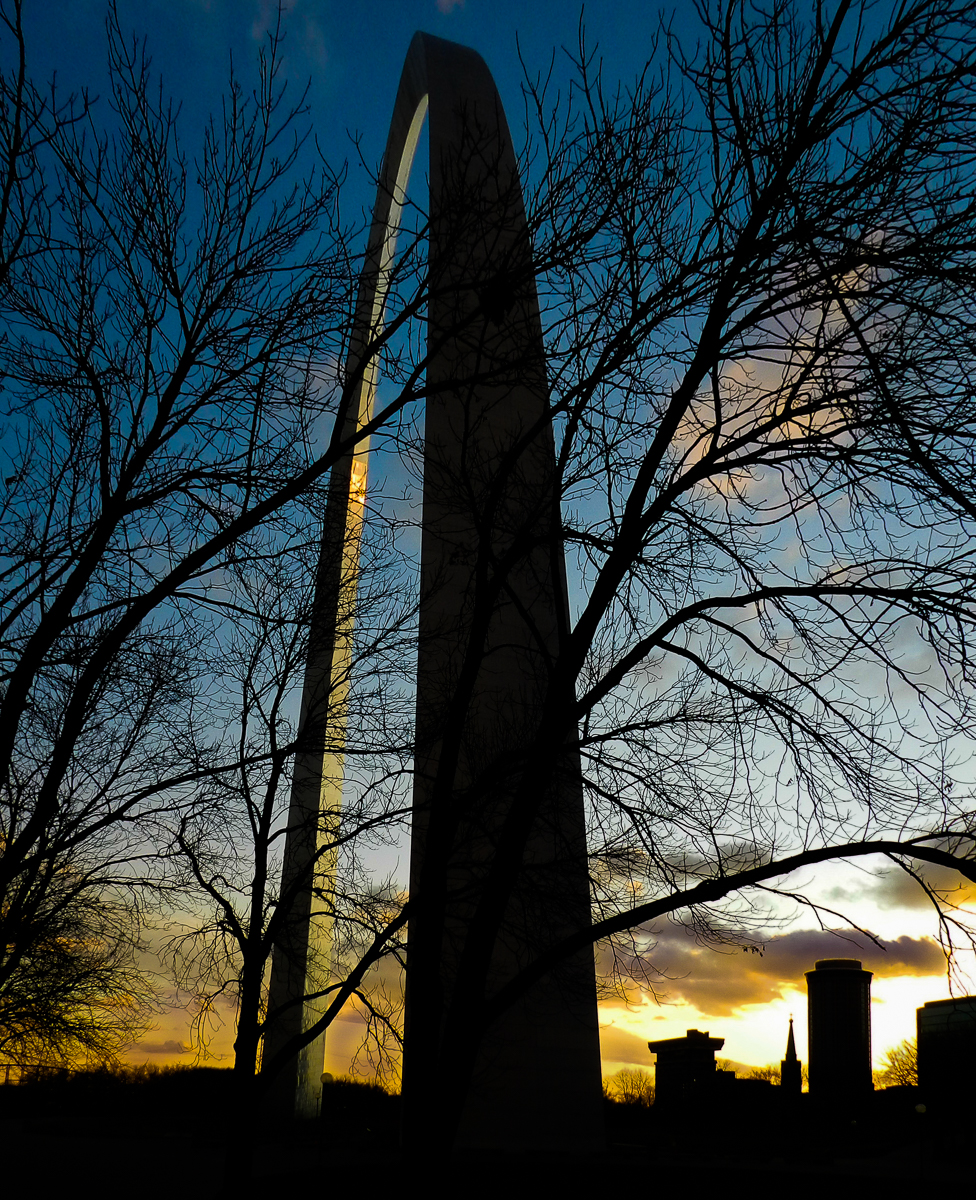
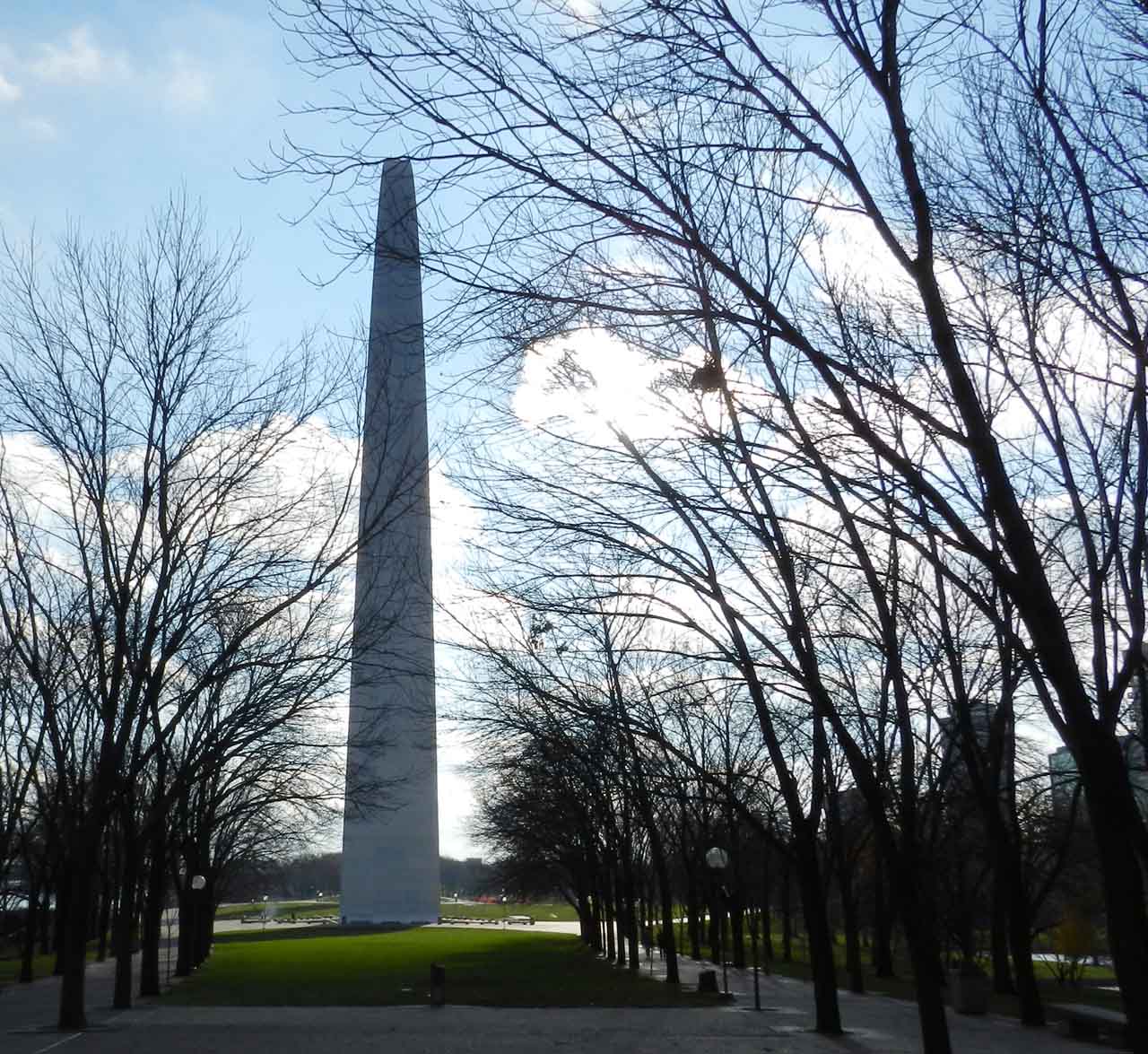
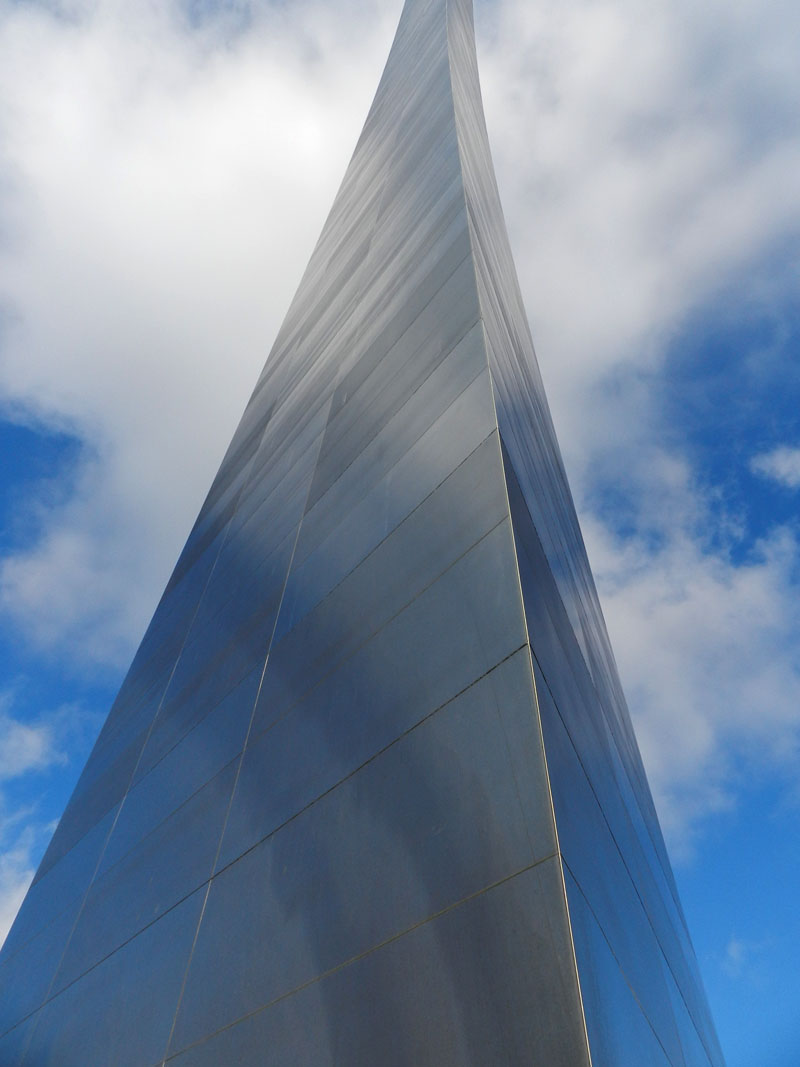
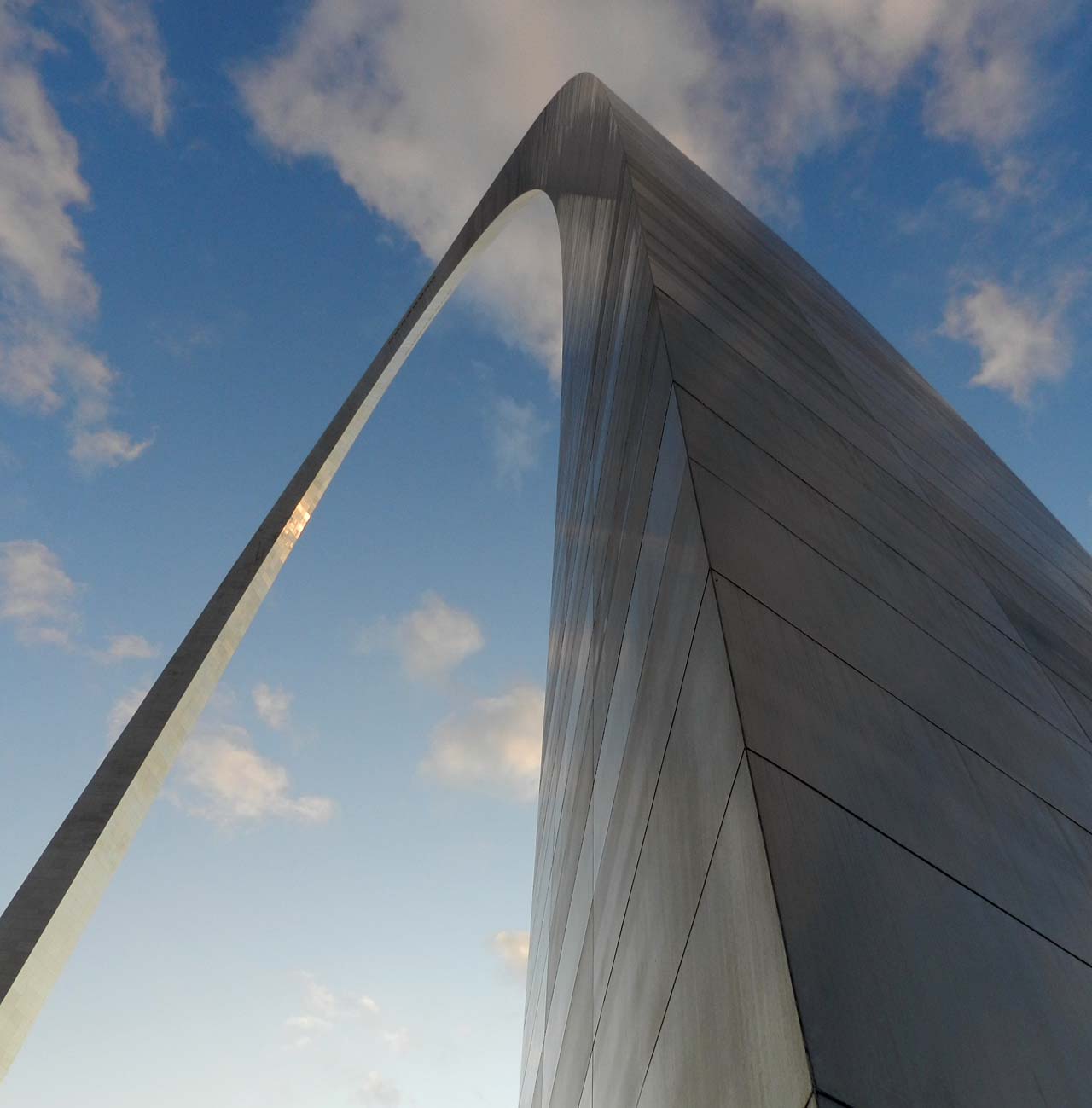
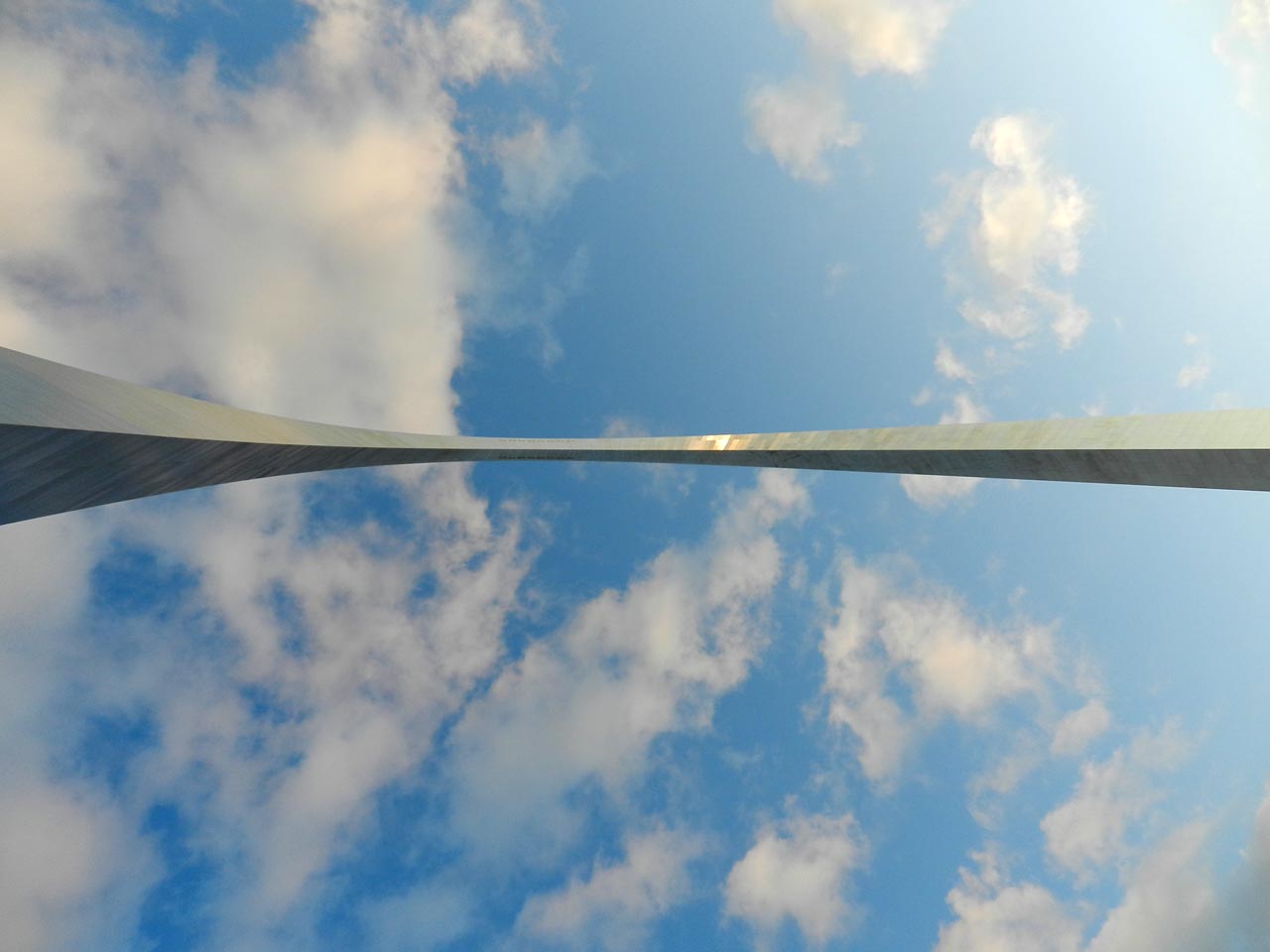
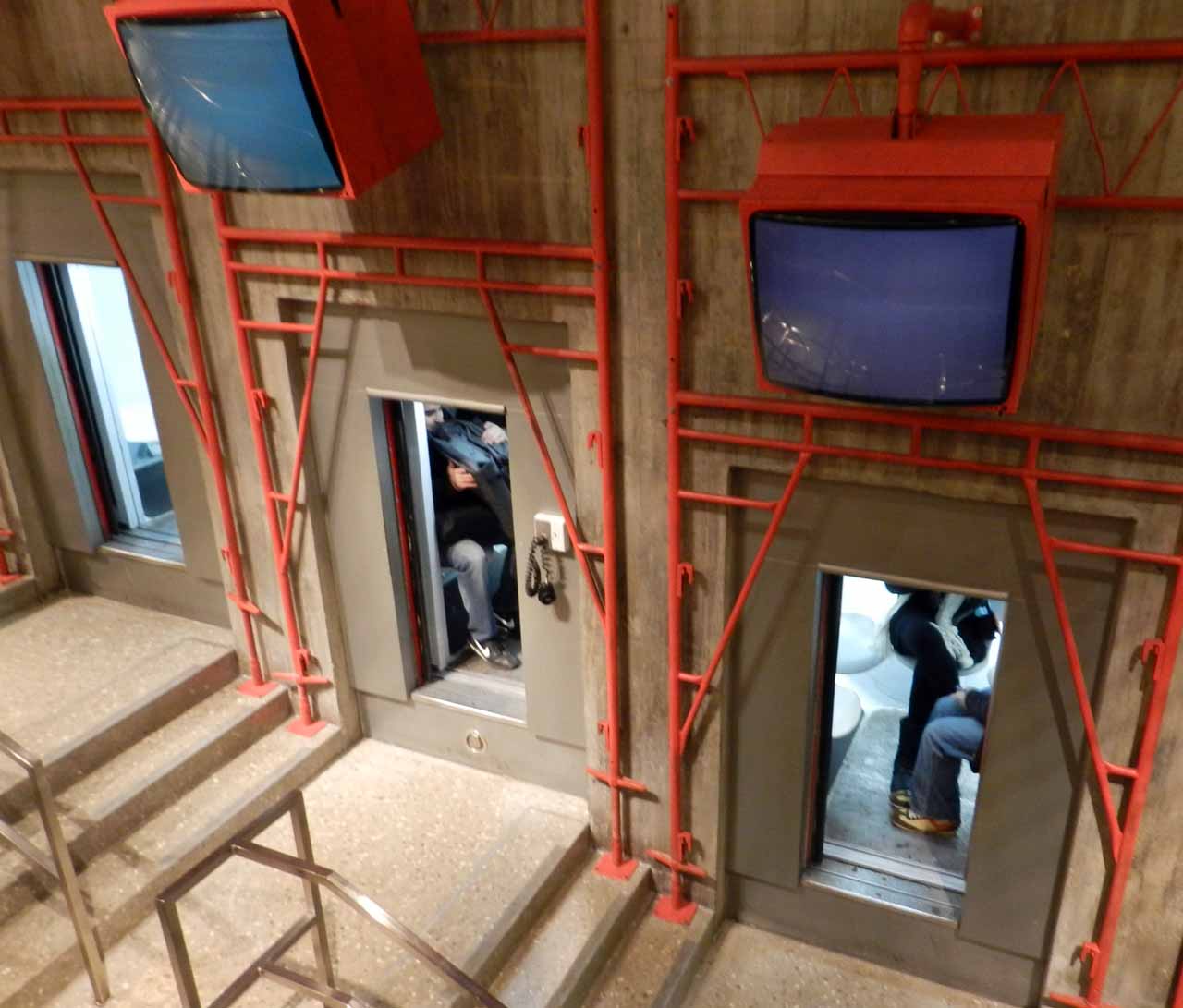
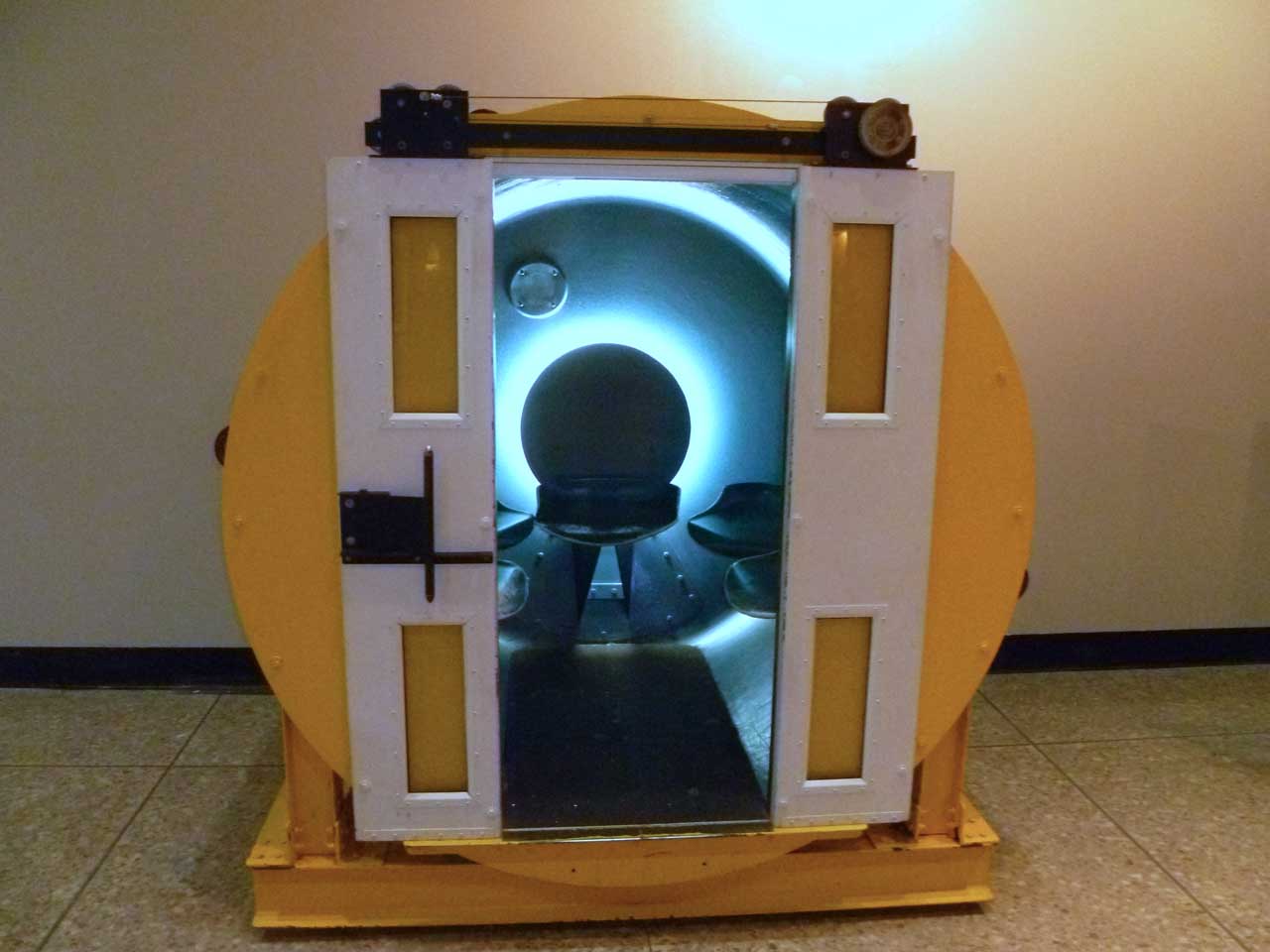
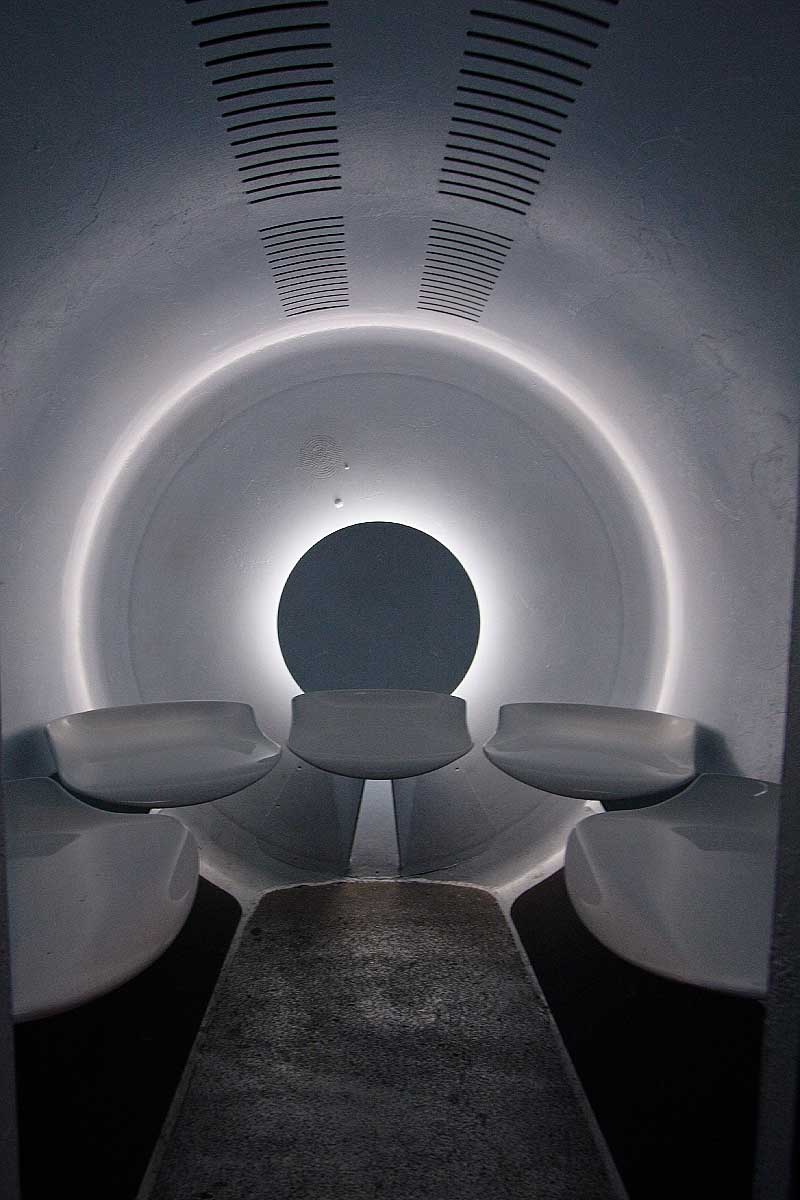
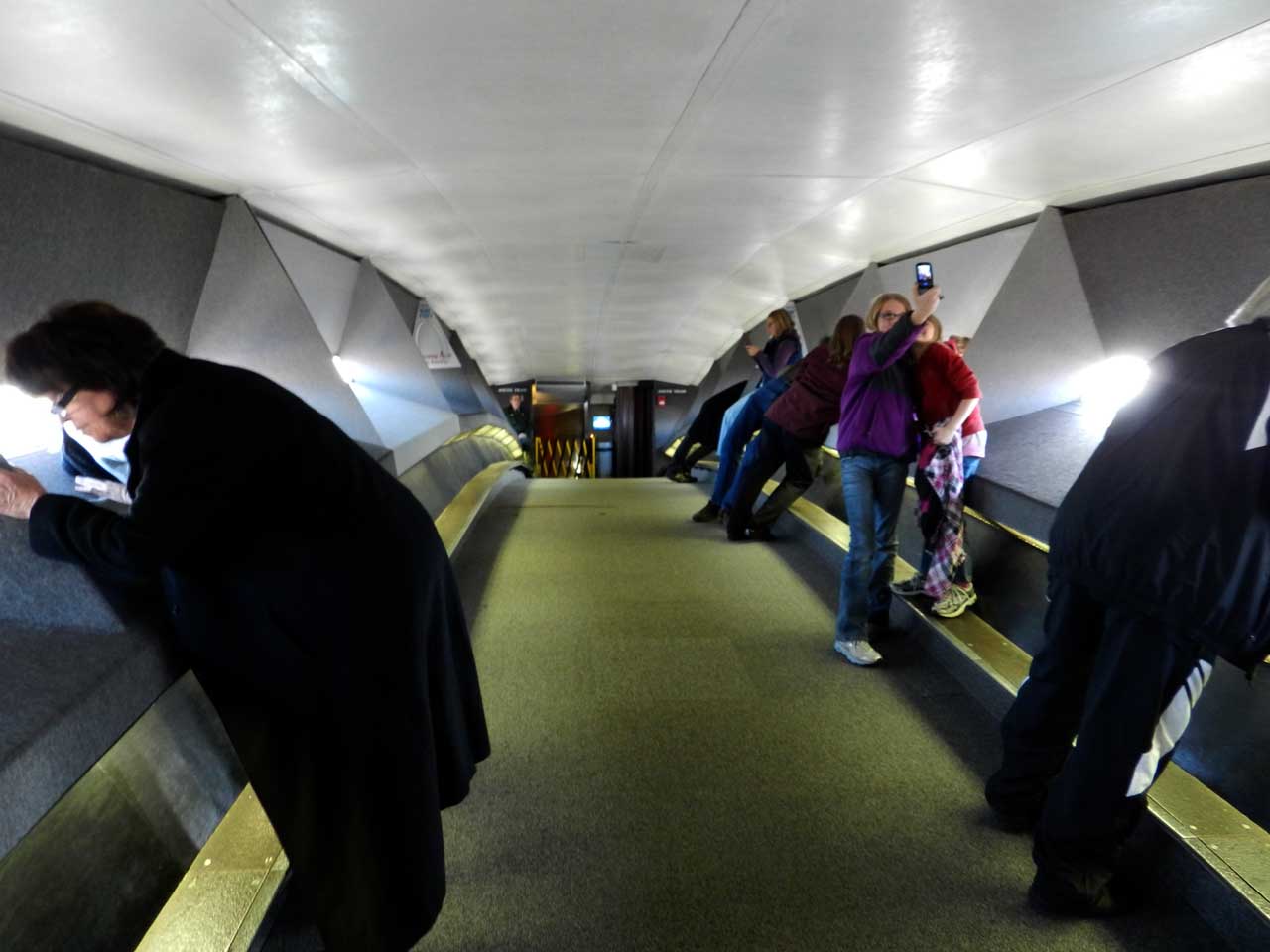
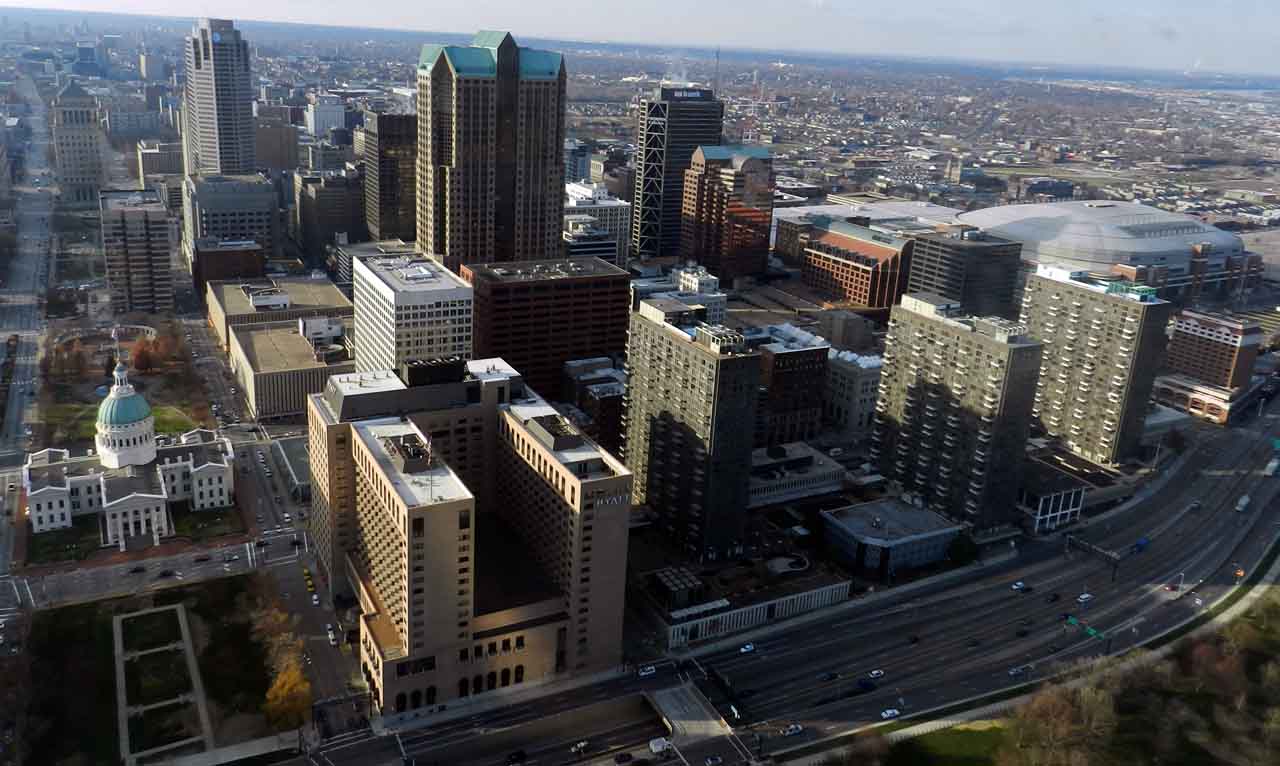

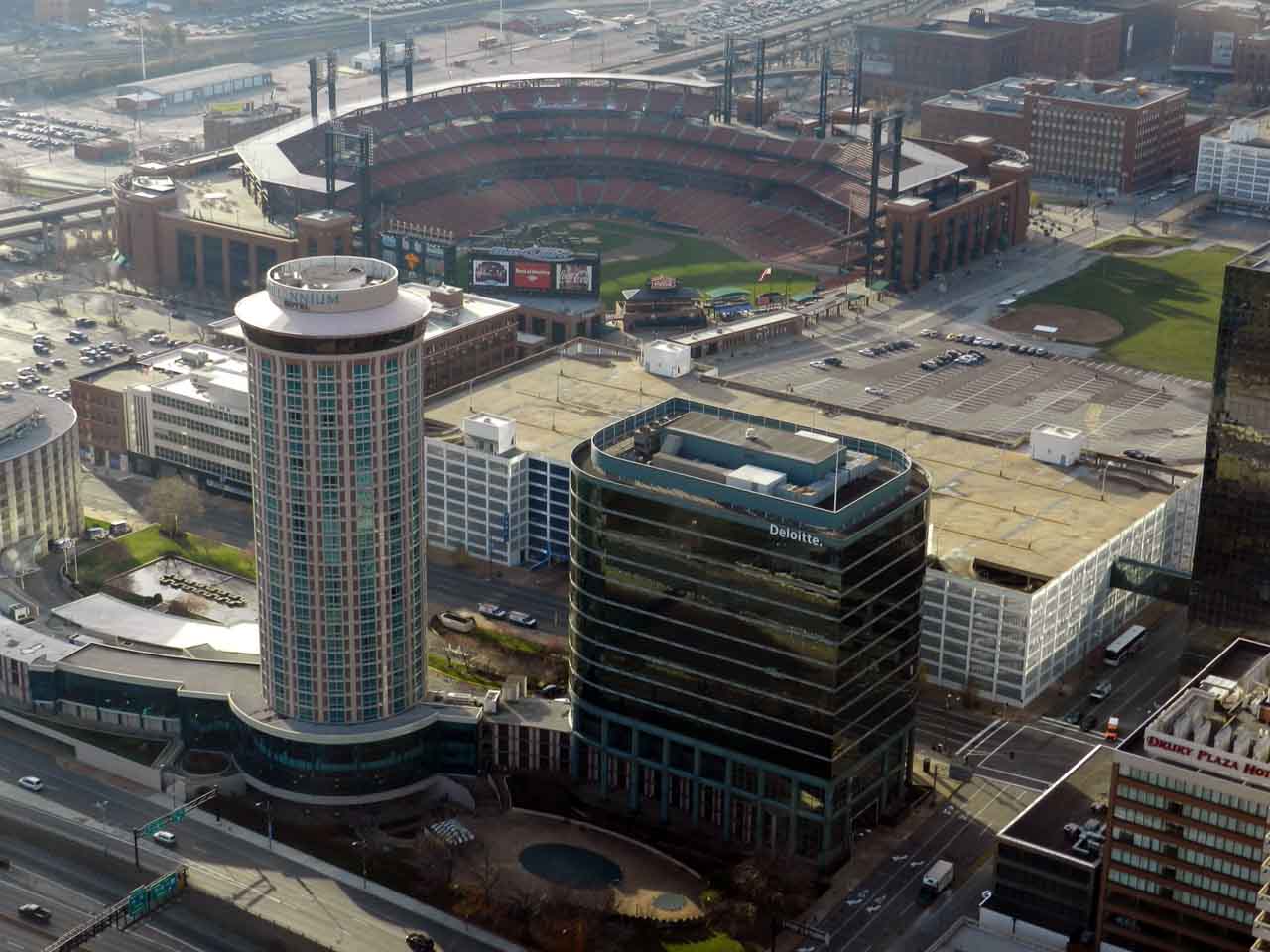
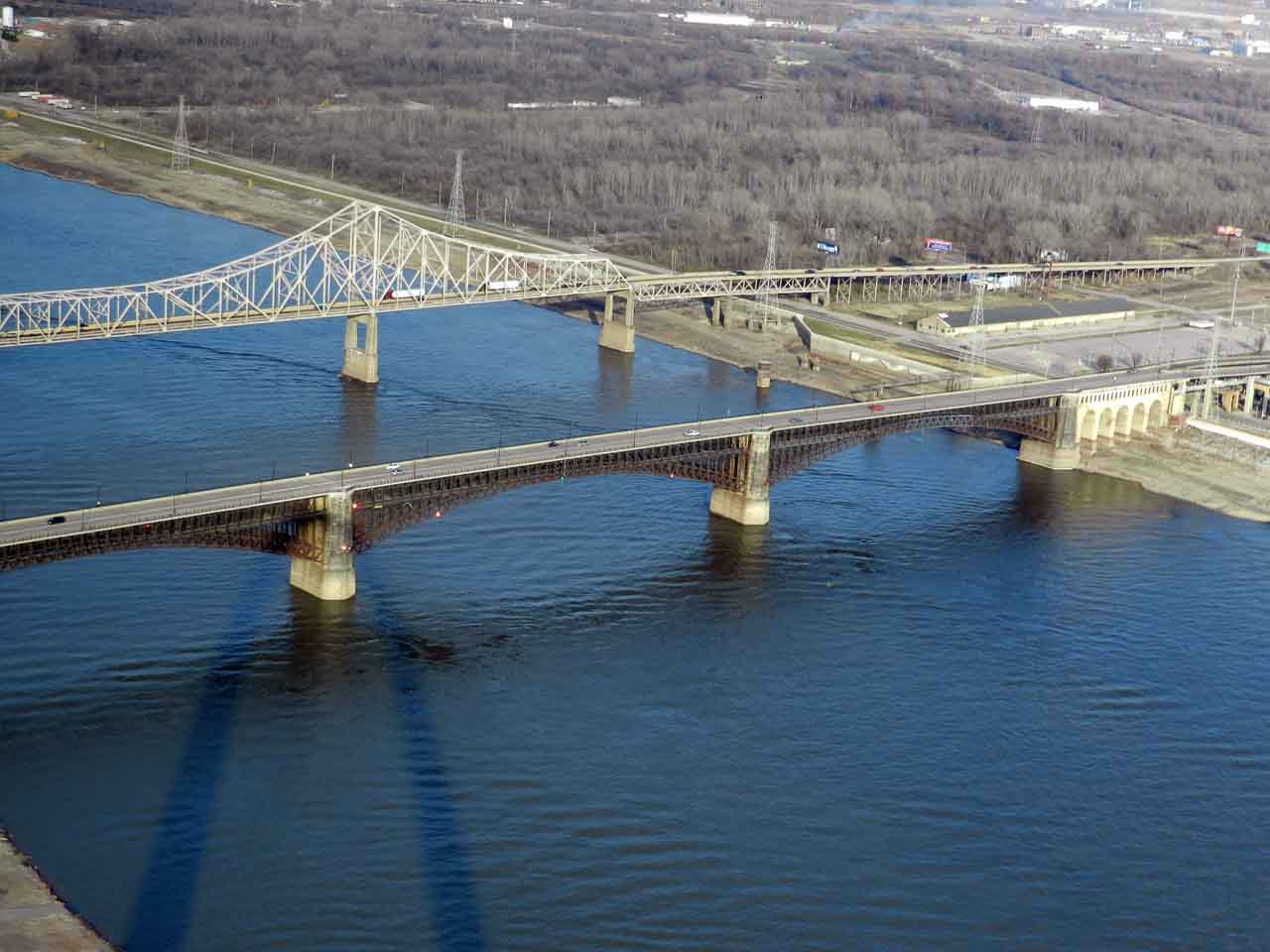
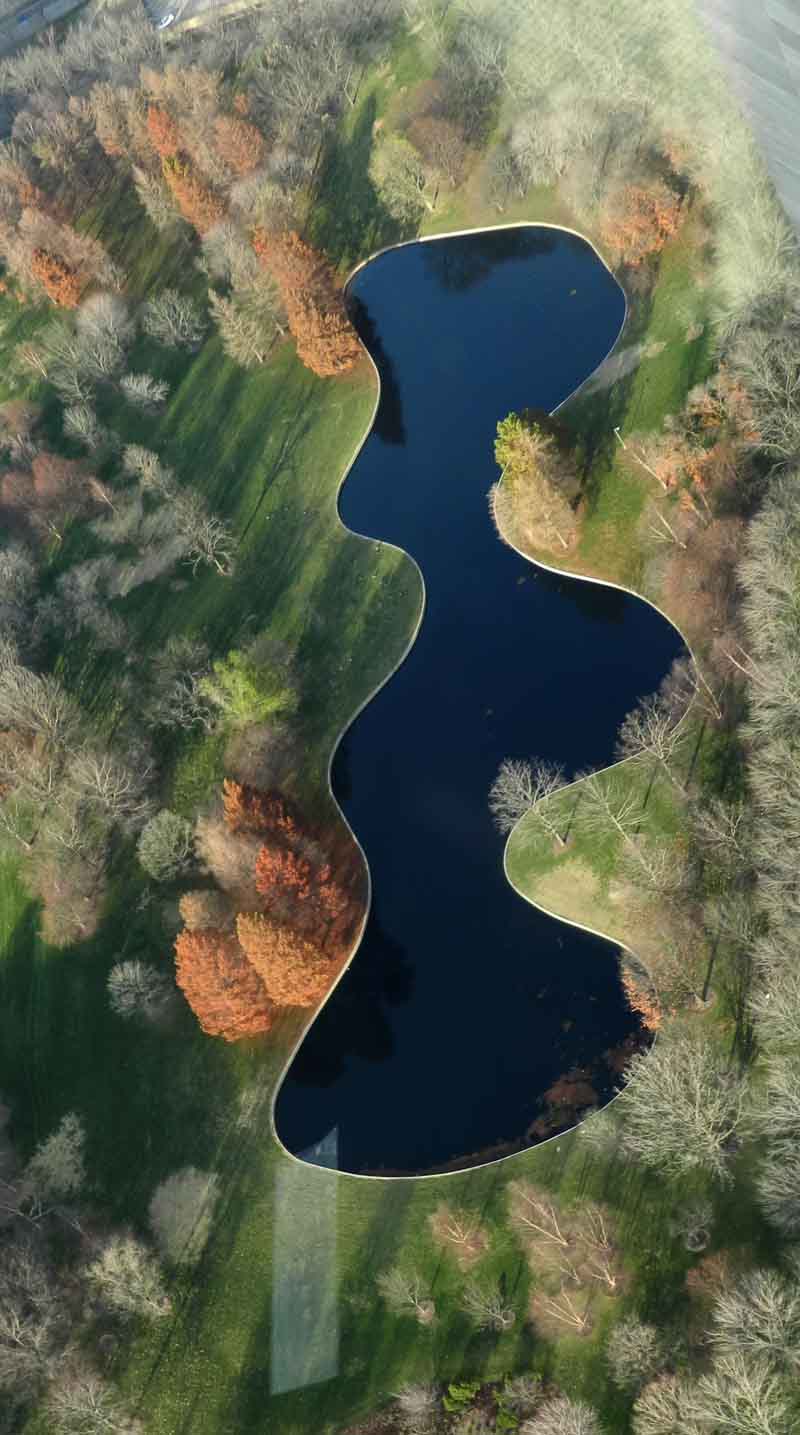
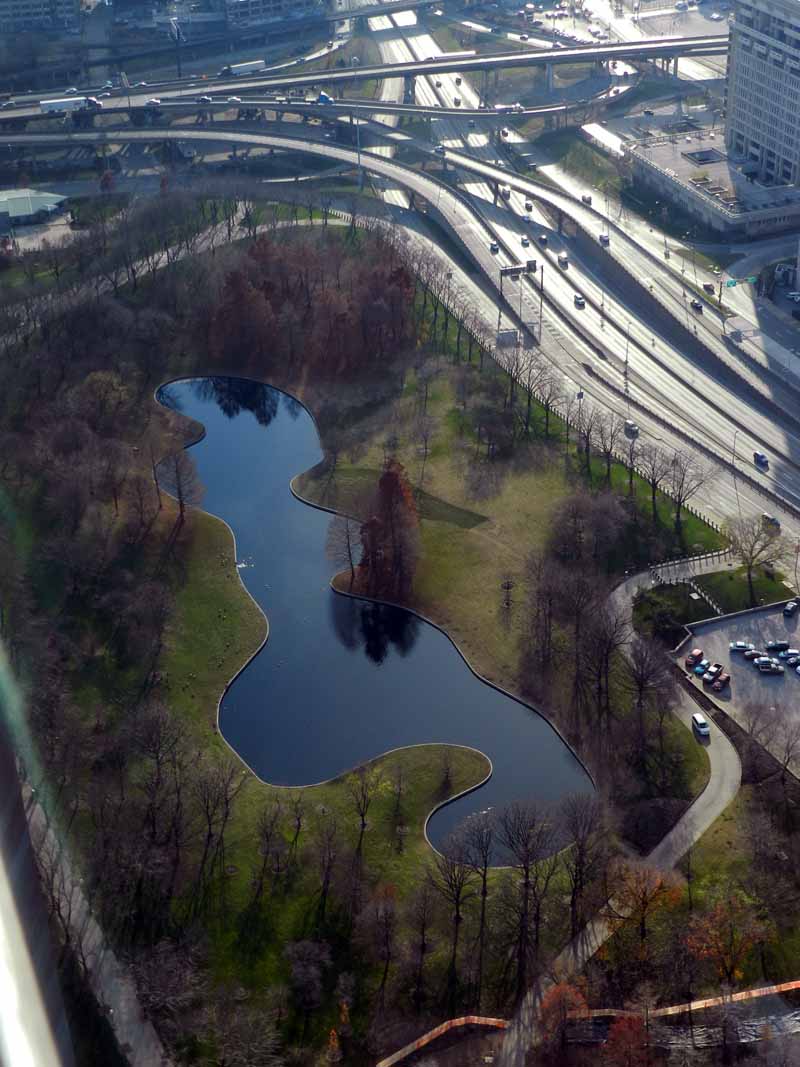
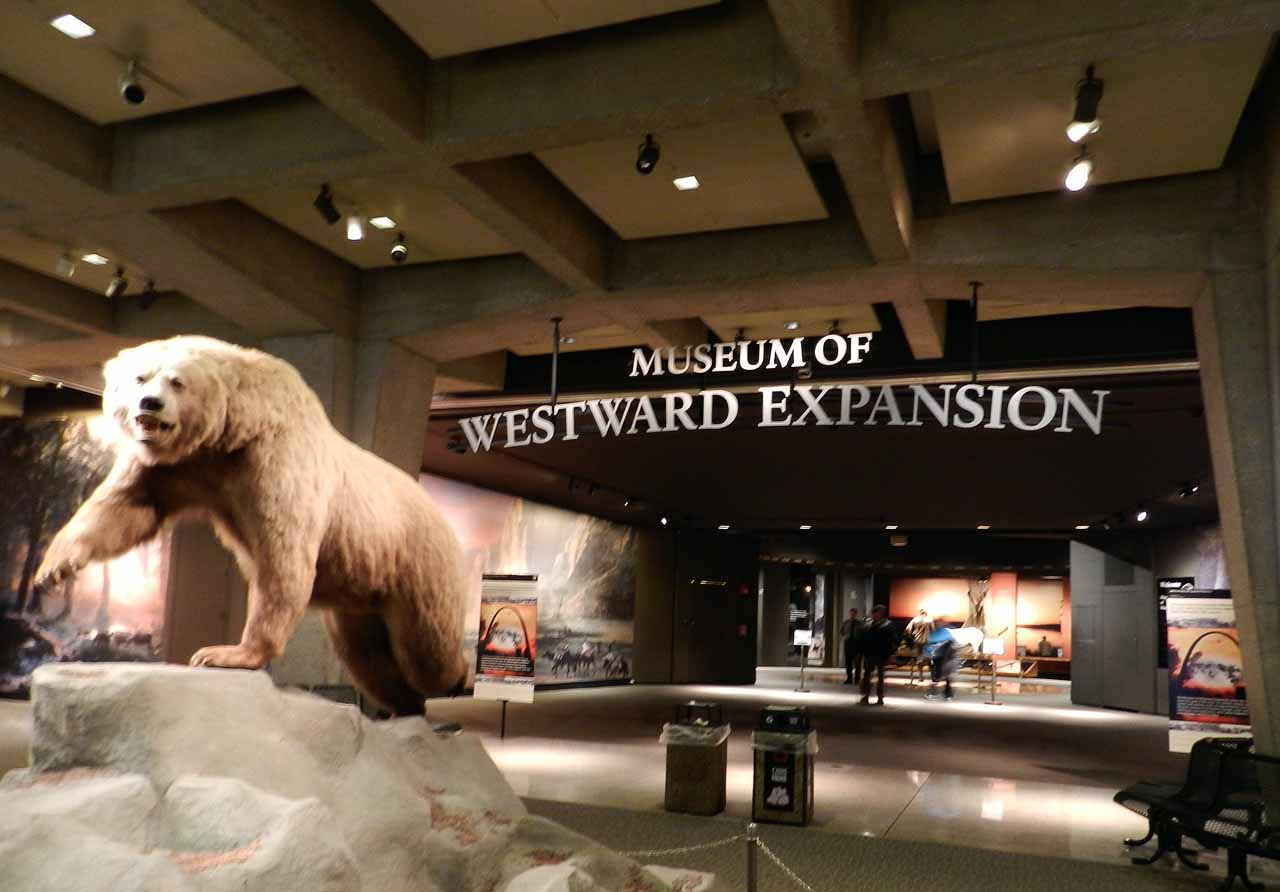
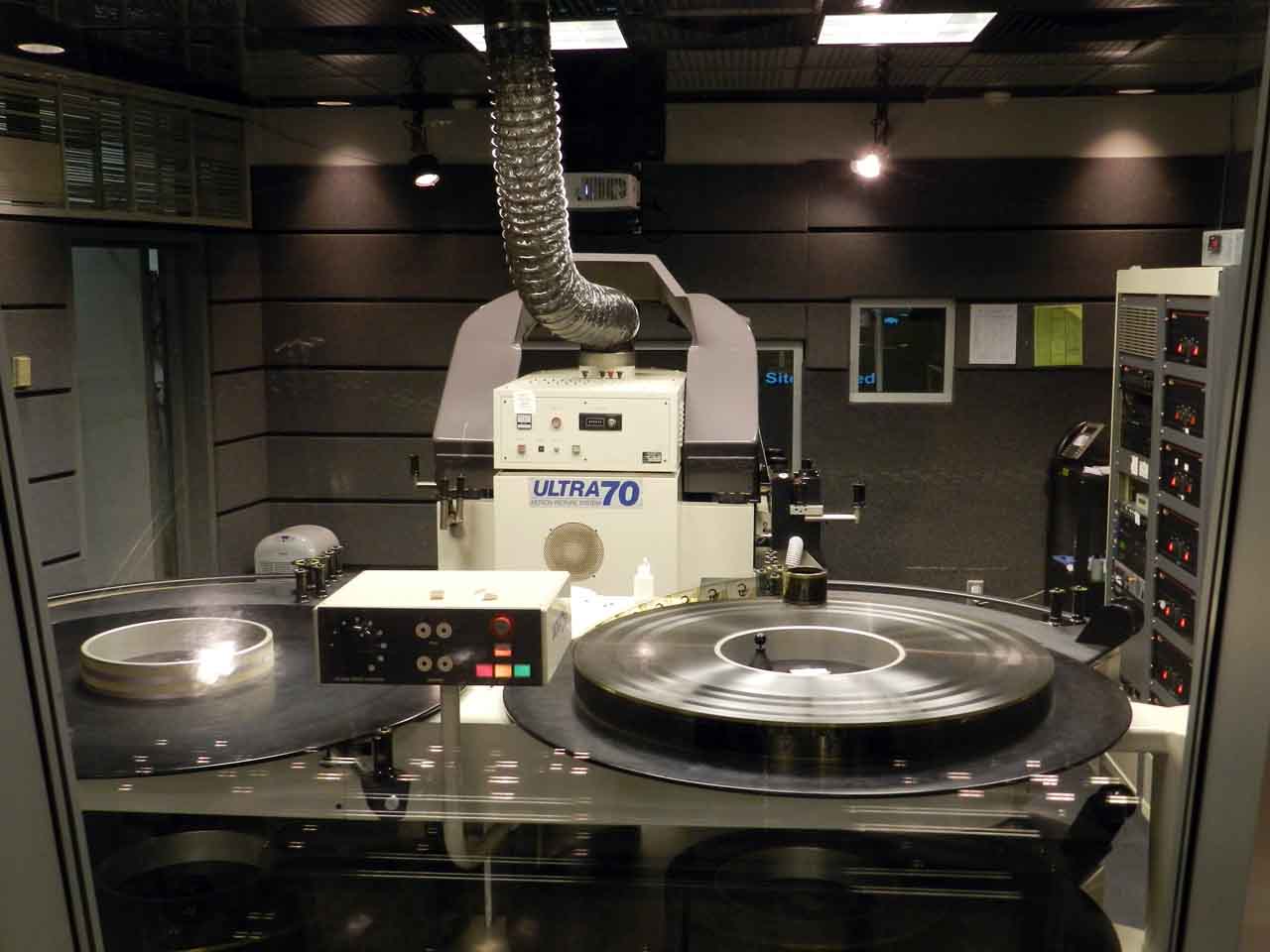


This was a fun read. Great shots too. Love the arch architecture shots.
I suppose the stand-and-look-up height question leaves one able to stand on a boat, and look up at the suspension towers in various bridges. The Golden Gate’s tallest tower is 746 ft above water. Others have much taller towers, such as the 928 ft. Akashi KaikyÅ.
We could also consider the Royal Gorge Bridge in Canon City, CA at 956 ft.
The skybridge joining the Nation Towers in Abu Dhabi hits a record height of 664 ft. I get nervous just seeing the images and thinking about walking across this monster.
Last, can we consider radio towers? The KVLY-TV tower tops upwards of 2,063 feet. I wonder what height can be seen when standing in between the mast members? (The Warsaw Radio Mast was upwards of 2,120 ft – alas, it got tired).
A favorite site I’ve enjoyed for years: http://skyscraperpage.com/
MrC – Thanks for your well researched ideas. I will inject three observations:
a) Colorado residents are probably pissed off that you moved the Royal Gorge bridge from Colorado to California. Perhaps Jerry Brown could partially solve California’s budgetary problems by selling the bridge back to Colorado! Aside from that, this fulfills the requirement that one could stand directly underneath a structure of this great height, either from the Arkansas River, or the service road along side the river.
b) In my mind, the Golden Gate towers do not qualify, because the suspended roadway would block the view of the towers unless you were off to the side – this logic would apply to other bridges as well.
c) The skybridge between the Nation Towers in Abu Dhabi is a great example of a structure that one could readily stand under that exceeds the height of the St. Louis arch. Thanks for pointing this out – now I guess I’ll have to add the Persian Gulf region to my list of future travel destinations (although I probably could not afford such a trip – at least not until my ship comes in)!
CA, desirous of the CO waters, will pass legislation to consume all states east of Kansas, so there’s hope yet we’ll get that bridge yet!
The (b) bridge offerings are a tricky call. I believe from inside the towers, which are essentially hollow, one could theoretically see pretty far, but I don’t know the visible height. I suppose this also includes elevator shafts then too in any modern skyscrapers. Additionally, from the edge of the road deck of the Akashi KaikyÅ (and other bridges), it appears one can look straight up at the main cable which is a substantial piece of construction at over 3.5 ft. thick and weighing approximately 27,000 lbs / meter. That height would reach over 650 ft. The entire steel work of the St. Louis Arch is 2,761 tons, so at 14 tons/meter, the arch is just 1 ton/meter heavier than the bridge cable alone. So, I’m tossing such bridges back into the ring.
But let’s put the bridge impeachment to rest – the Millau Viaduct is simply unequaled and easily measures up and surpasses the SLA. I’ll leave it to be determined, the heights above the various points under the viaduct, such as the roadway, hills or river.
This was fun… I probably watch too many Modern Marvels, Extreme Engineering, and Build It Bigger programs.
Ugh, West of Kansas.
This is a really nice trip report. I’ve never been to the arch, but it looks amazing.